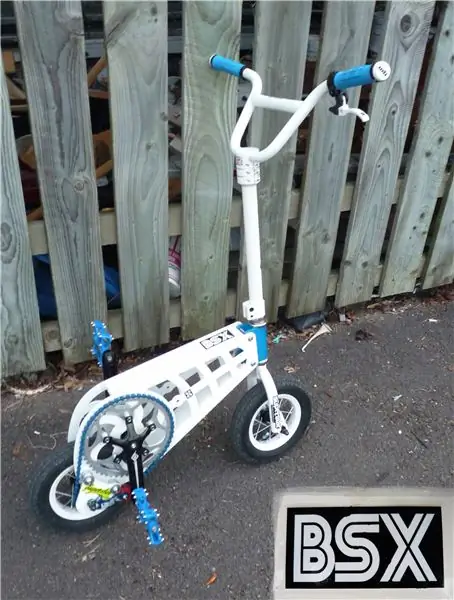
Tabla de contenido:
- Autor John Day [email protected].
- Public 2024-01-30 08:40.
- Última modificación 2025-01-23 14:39.
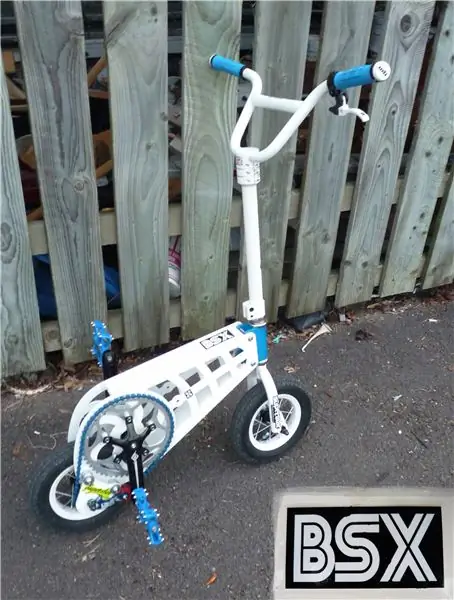
juego de tic tac toe de pitón
este juego está hecho en python que es un lenguaje de computadora
He usado un editor de Python llamado: pycharm, también puede usar el editor de código Python normal.
Paso 1: Importar
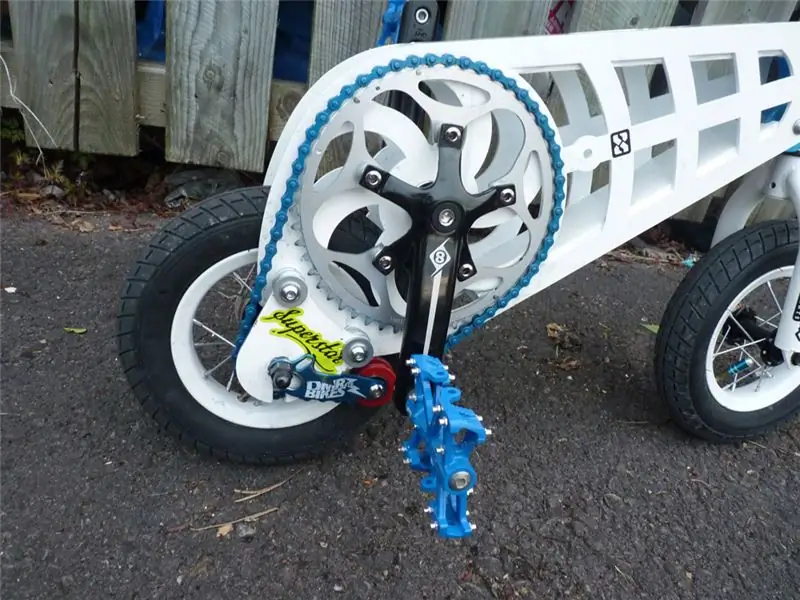
desde tkinter import *
Paso 2: raíz
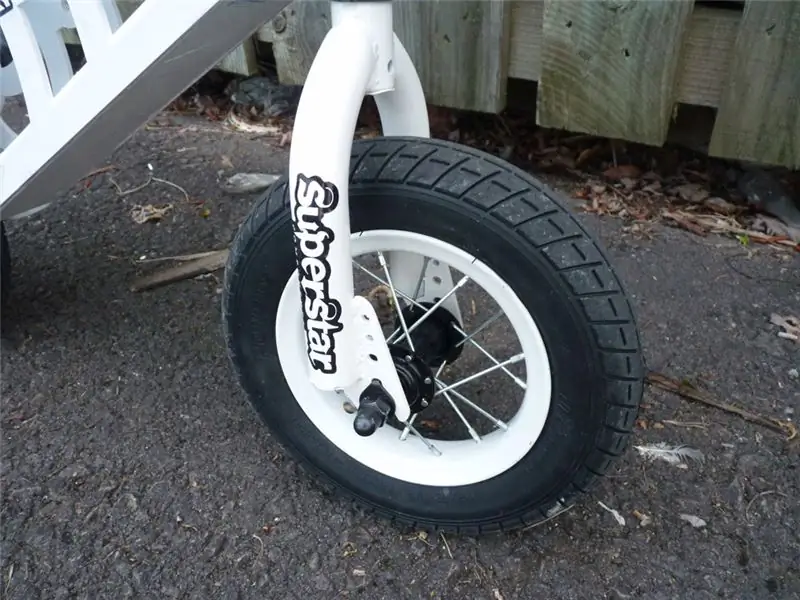
raíz = Tk ()
root.title ("3T TIC TAC TOE") # Título
text = Entry (root, font = ("ds-digital", 15)) text.pack (fill = X, padx = 5, pady = 5, ipadx = 5, ipady = 5) # Texto
tablero = ["-", "-", "-", "-", "-", "-", "-", "-", "-"] # Tablero
Paso 3: función después de poner en el editor Muestra advertencias Haga clic en las ventanas y entréguele todo a Assambel
# Funciones
jugador = botón "X" = stop_game = False stop_game_tie = False
def Turn (): # Imprimiendo Turn text.delete (0, END) text.insert (0, "{} 'S TURN".format (jugador))
def Exit (): root.destroy () exit ()
def Game_Over (): # Chech si el juego ha terminado Check_Winner ()
if stop_game == True: Hplayer () text.delete (0, END) text.insert (0, "'{}' WINNER".format (jugador))
más: Check_Tie ()
if stop_game_tie == True: text.delete (0, END) text.insert (0, "TIE MATCH")
def Check_Winner (): # Comprueba si hay un ganador global stop_game
fila_1 = tablero [0] == tablero [1] == tablero [2]! = "-" fila_2 = tablero [3] == tablero [4] == tablero [5]! = "-" fila_3 = tablero [6] == tablero [7] == tablero [8]! = "-" si fila_1 o fila_2 o fila_3: stop_game = True
column_1 = tablero [0] == tablero [3] == tablero [6]! = "-" columna_2 = tablero [1] == tablero [4] == tablero [7]! = "-" columna_3 = tablero [2] == tablero [5] == tablero [8]! = "-" si column_1 o column_2 o column_3: stop_game = True
diagonal_1 = tablero [0] == tablero [4] == tablero [8]! = "-" diagonal_2 = tablero [2] == tablero [4] == tablero [6]! = "-" si diagonal_1 o diagonal_2: stop_game = Verdadero
def Check_Tie (): # Comprueba si es un empate coincide con global stop_game_tie
si "-" no está en el tablero: stop_game_tie = True
def Hplayer (): # Gestión del jugador global de Turno
si jugador == "X": jugador = "O"
más: jugador = "X"
def Add_Text (pos, play): # Botón global Agregar texto
if pos no en button y stop_game == False y stop_game_tie == False y pos! = 9: Turn ()
def_buttons [pos].configure (texto = reproducir) tablero [pos] = jugador
button.append (pos) Hplayer () Turn () Game_Over ()
Paso 4: Código final ¿Dará un vistazo final?
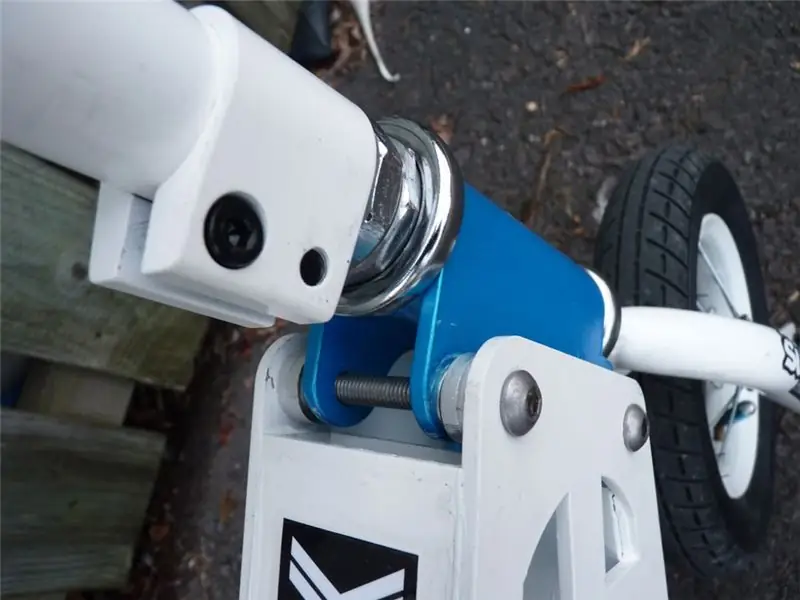

# RED
def New_Match (): # Función de botón de nueva partida global board global player global button global stop_game global stop_game_tie
button_1.configure (text = "") button_2.configure (text = "") button_3.configure (text = "") button_4.configure (text = "") button_5.configure (text = "") button_6.configure (texto = "") button_7.configure (text = "") button_8.configure (text = "") button_9.configure (text = "") tablero = ["-", "-", "-", "-", "-", "-", "-", "-", "-"] jugador = botón "X" = stop_game = False stop_game_tie = False Turn ()
# Botones
Girar()
frame = Frame (raíz) frame.pack (lateral = SUPERIOR, ancla = NW)
frame1 = Frame (marco) frame1.pack ()
button_1 = Button (frame1, text = "", width = 8, height = 3, command = lambda: Add_Text (0, player), bg = 'pink') button_1.pack (side = LEFT)
button_2 = Button (frame1, text = "", width = 8, height = 3, command = lambda: Add_Text (1, player), bg = 'pink') button_2.pack (lateral = IZQUIERDA)
button_3 = Button (frame1, text = "", width = 8, height = 3, command = lambda: Add_Text (2, player), bg = 'pink') button_3.pack (lateral = IZQUIERDA)
frame2 = Frame (marco) frame2.pack ()
button_4 = Button (frame2, text = "", width = 8, height = 3, command = lambda: Add_Text (3, player), bg = 'blue') button_4.pack (lateral = IZQUIERDA)
button_5 = Button (frame2, text = "", width = 8, height = 3, command = lambda: Add_Text (4, player), bg = 'blue') button_5.pack (lateral = IZQUIERDA)
button_6 = Button (frame2, text = "", width = 8, height = 3, command = lambda: Add_Text (5, player), bg = 'blue') button_6.pack (lateral = IZQUIERDA)
frame3 = Frame (marco) frame3.pack ()
button_7 = Button (frame3, text = "", width = 8, height = 3, command = lambda: Add_Text (6, player), bg = 'orange') button_7.pack (lateral = IZQUIERDA)
button_8 = Button (frame3, text = "", width = 8, height = 3, command = lambda: Add_Text (7, player), bg = 'orange') button_8.pack (lateral = IZQUIERDA)
button_9 = Button (frame3, text = "", width = 8, height = 3, command = lambda: Add_Text (8, player), bg = 'orange') button_9.pack (lateral = IZQUIERDA)
frame4 = Frame (marco) frame4.pack ()
button_clear = Button (frame4, text = "NEW MATCH", width = 13, height = 3, command = lambda: New_Match (), bg = 'violet', foreground = 'red') button_clear.pack (lado = IZQUIERDA)
exit_button = Button (frame4, text = "EXIT", width = 12, height = 3, command = lambda: Exit (), bg = 'green', foreground = 'orange') exit_button.pack (lateral = IZQUIERDA)
def_buttons = [button_1, button_2, button_3, button_4, button_5, button_6, button_7, button_8, button_9]
root.mainloop ()
Recomendado:
Juego Arduino Touch Tic Tac Toe: 6 pasos (con imágenes)
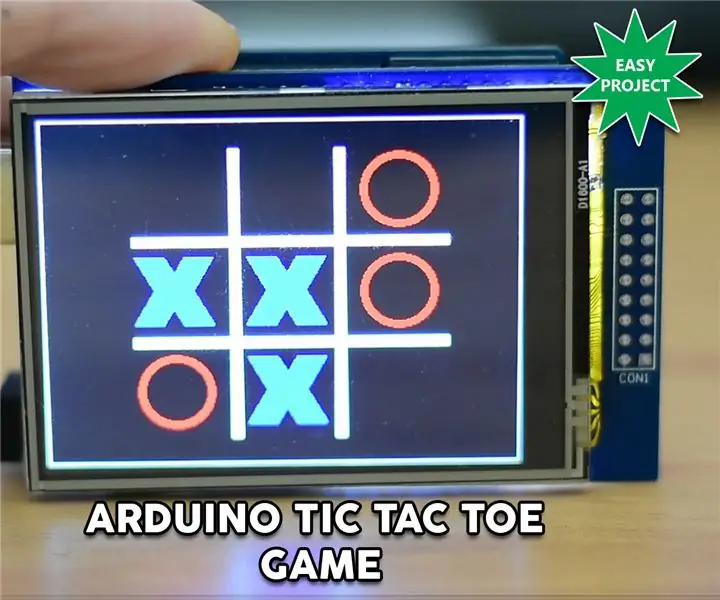
Arduino Touch Tic Tac Toe Game: Queridos amigos, ¡bienvenidos a otro tutorial de Arduino! En este tutorial detallado vamos a construir un juego Arduino Tic Tac Toe. Como puede ver, estamos usando una pantalla táctil y estamos jugando contra la computadora. Un juego simple como Tic Tac Toe es
Juego electrónico Tic-Tac-Toe en una caja de madera: 5 pasos
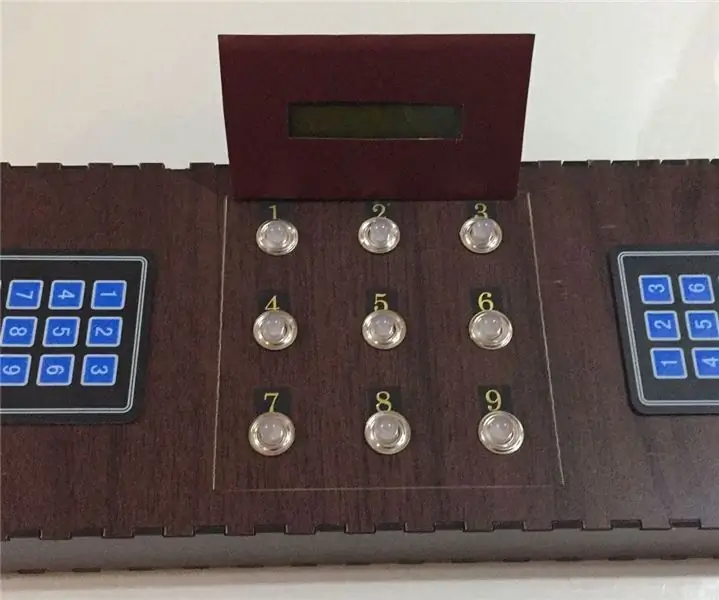
Juego electrónico Tic-Tac-Toe en una caja de madera: Hola, presento el divertido juego Tic-Tac-Toe en una nueva edición. Busqué en la web un proyecto similar, pero la idea aquí es única. ESPERANZA :) Así que comencemos ahora
Juego Microbit Tic Tac Toe: 4 pasos (con imágenes)
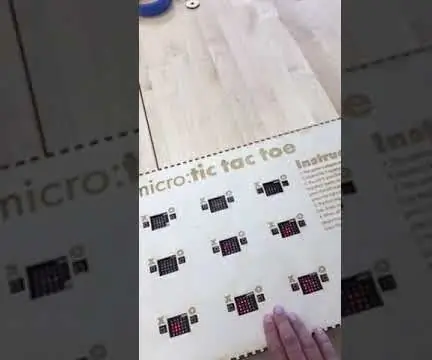
Microbit Tic Tac Toe Game: para este proyecto, mi compañero de trabajo, @descartez, y yo creamos un increíble juego de tic tac toe utilizando la funcionalidad de radio de microbits. Si no ha oído hablar antes de los microbits, son un microcontrolador increíble diseñado para enseñar programación a los niños. Ellos
Juego 3D4x: Tic-Tac-Toe 3D 4x4x4: 5 pasos (con imágenes)
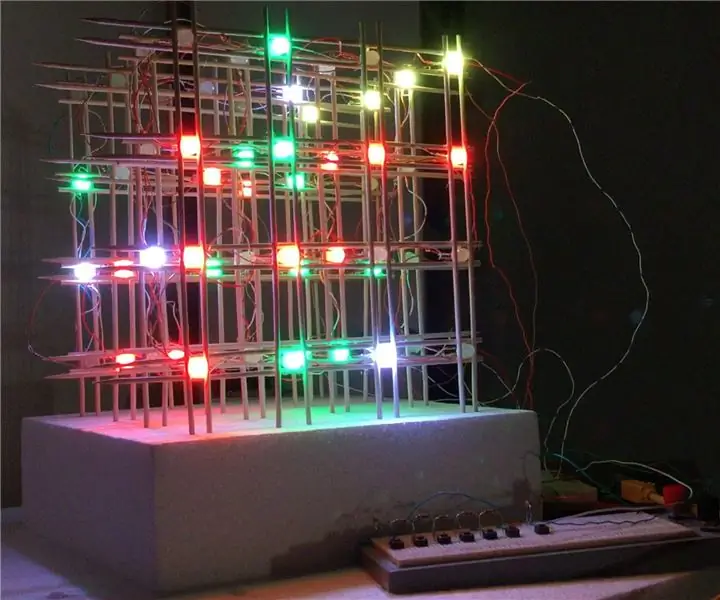
3D4x Juego: 3D 4x4x4 Tic-Tac-Toe: ¿Estás cansado de jugar al mismo tic-tac-toe, viejo, aburrido y bidimensional? ¡Pues tenemos la solución para ti! Tic-tac-toe en 3 dimensiones !!! Para 2 jugadores, en este cubo 4x4x4, obtenga 4 LED seguidos (en cualquier dirección) y ¡gana! Tú lo haces. Tu pla
Cómo hacer un juego de Tic Tac Toe usando Swift con Xcode: 5 pasos
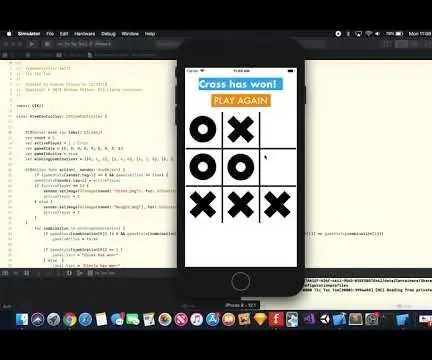
Cómo hacer un juego Tic Tac Toe usando Swift con Xcode: En este tutorial de Swift, te mostraré cómo crear una aplicación Tic Tac Toe. Esta aplicación es extremadamente simple y es un gran proyecto para cualquier principiante. Dividiré el tutorial en tres pasos: 1. Creando los objetos 2. Vincular objetos al código 3. La C
